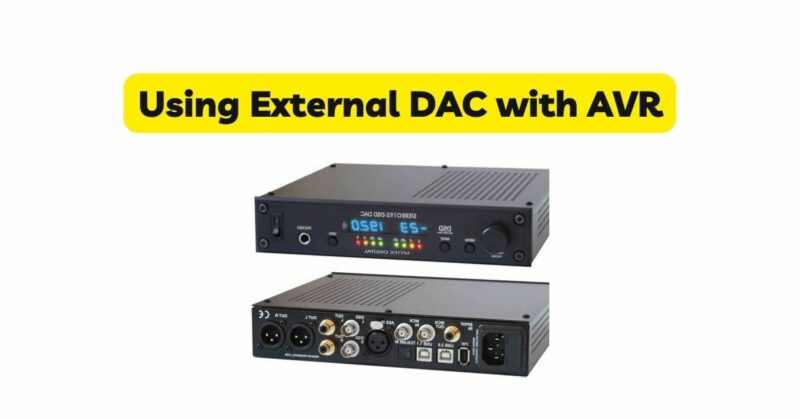AV receivers are versatile audio components that serve as the heart of a home theater system, providing amplification, audio processing, and connectivity options. While AV receivers often come equipped with built-in digital-to-analog converters (DACs), many enthusiasts seek even higher audio fidelity and performance by incorporating external DACs into their setup. In this detailed article, we will explore the benefits and considerations of using an external DAC with an AV receiver, and how it can elevate your audio experience.
Understanding the Role of a DAC
A digital-to-analog converter (DAC) plays a crucial role in the audio chain by converting digital audio signals into analog waveforms that can be amplified and reproduced by speakers. AV receivers typically include built-in DACs that perform this conversion process. However, the quality of the internal DACs can vary across different models and price ranges.
Benefits of Using an External DAC
- Improved Audio Fidelity: One of the primary advantages of using an external DAC with an AV receiver is the potential for improved audio fidelity. High-quality external DACs often offer superior digital signal processing, precision clocking, and high-resolution audio decoding capabilities. This can result in a cleaner, more detailed sound reproduction, with enhanced clarity, separation, and dynamic range.
- Enhanced Connectivity: External DACs often provide a broader range of connectivity options compared to built-in DACs in AV receivers. They may offer various digital inputs such as USB, coaxial, and optical, allowing you to connect a wider range of audio sources directly to the DAC. This versatility enables you to bypass the AV receiver’s internal DAC and directly route the digital audio signal to the external DAC for processing.
- Flexibility and Upgradability: Using an external DAC grants you greater flexibility and upgradability options. As technology advances and new DAC models are introduced, you can easily upgrade your audio system by replacing or adding an external DAC without replacing the entire AV receiver. This adaptability allows you to tailor your system to evolving audio standards and your personal preferences.
Considerations when Using an External DAC
- Source Compatibility: Ensure that your AV receiver and the external DAC are compatible in terms of digital audio formats and sample rates. Verify that the external DAC supports the audio formats and resolutions of your preferred audio sources, such as high-resolution audio files or streaming services.
- Signal Routing: When using an external DAC with an AV receiver, you will need to configure the signal routing properly. This typically involves connecting the digital audio output of your source device, such as a media player or computer, to the input of the external DAC, and then connecting the DAC’s analog output to an available analog input on the AV receiver.
- Potential Audio Processing Bypass: Using an external DAC may bypass certain audio processing features of the AV receiver, such as room correction or equalization functions. If you value these features, consider whether the benefits of using an external DAC outweigh the loss of these processing capabilities.
Conclusion
Incorporating an external DAC into your AV receiver setup can significantly enhance the audio performance and overall listening experience. By leveraging the superior digital processing capabilities, increased connectivity options, and upgradability of external DACs, you can unlock greater audio fidelity, detail, and versatility. However, it is essential to ensure compatibility, configure the signal routing correctly, and consider the trade-offs with regard to audio processing features. Ultimately, the decision to use an external DAC with an AV receiver depends on your audio aspirations, preferences, and the quality of the built-in DAC of your receiver. Careful consideration and experimentation can help you create an audio system that delivers the utmost sonic satisfaction and elevates your enjoyment of music and movies.

